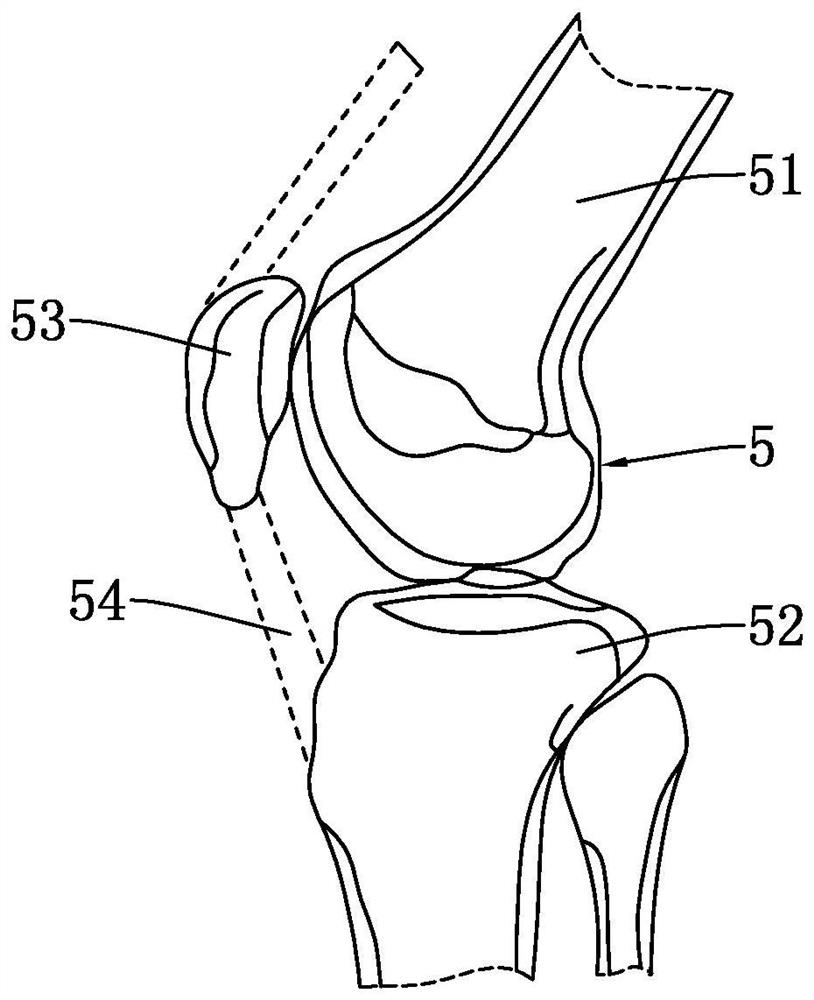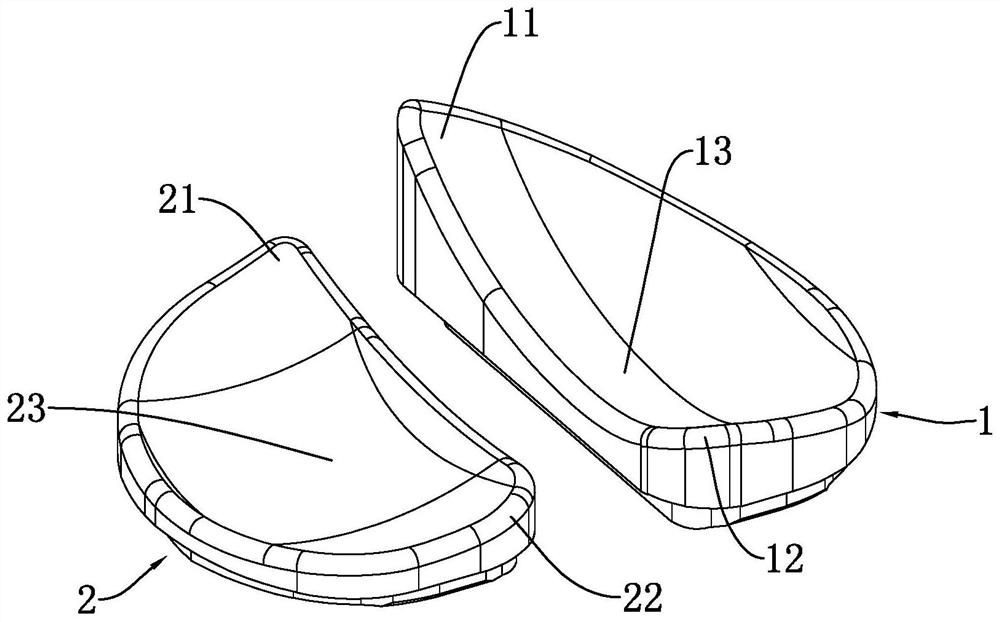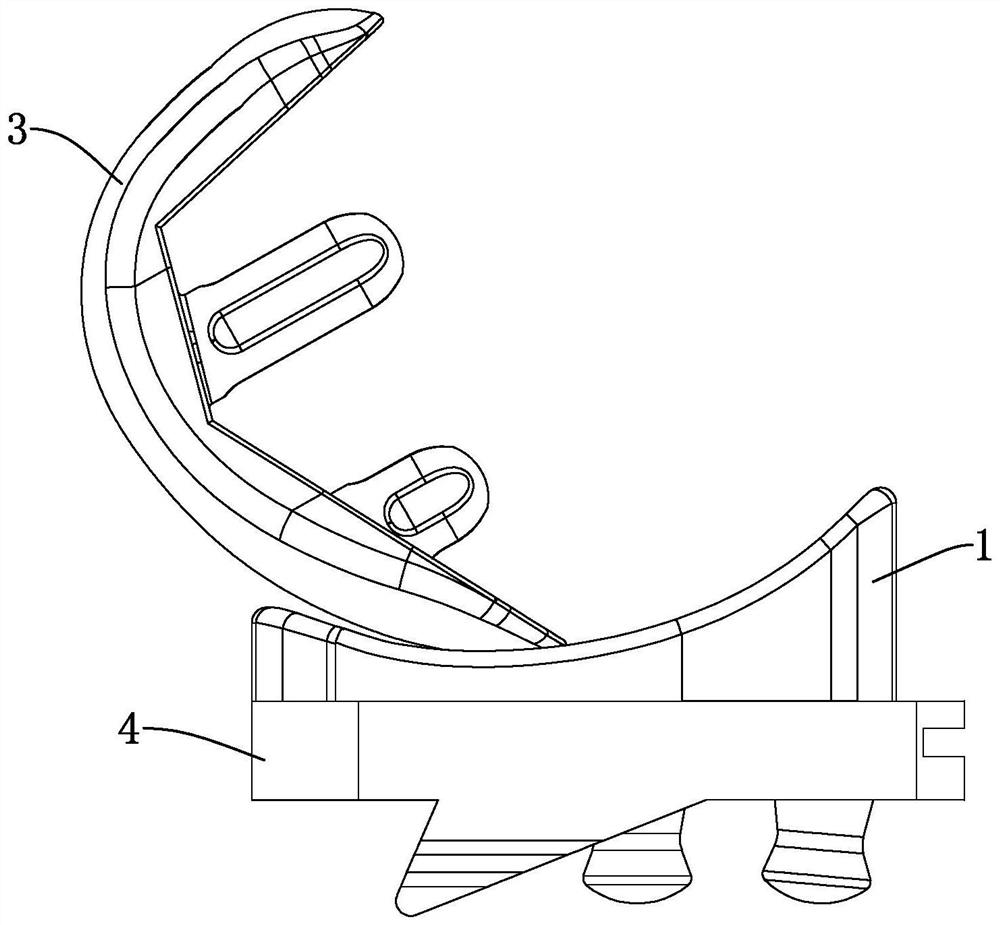Bionic stable unicompartmental knee joint tibial plateau pad and knee joint prosthesis applying same
A knee joint prosthesis and tibial platform technology, applied in the field of knee joint prosthesis, can solve the problems of high wear rate, small contact area, short life and other problems of the prosthesis, achieve high flexion, reduce risks, and reduce osteotomy. Effect
- Summary
- Abstract
- Description
- Claims
- Application Information
AI Technical Summary
Problems solved by technology
Method used
Image
Examples
Embodiment Construction
[0041] The application will be described in further detail below in conjunction with the accompanying drawings.
[0042] refer to figure 1 , the human knee joint 5 is composed of the distal femur 51 , the proximal tibia 52 , the patella 53 and the patellar ligament 54 .
[0043] During normal physiological movement of the human knee joint 5 , there is an external rotation of the knee joint, that is, during the flexion and extension process of the femoral condyle, the inner side will move backward by 2-4mm, and the outer side will rotate about 15°. The normal knee flexion and extension angle can reach 120°-150°. When the artificial knee prosthesis before improvement is in high flexion, as the femoral condyle rolls back, the tibial plateau pad will move forward relative to the femoral condyle.
[0044] The embodiment of the present application discloses a bionic stable unicondylar knee joint tibial plateau pad and a knee joint prosthesis using the same. refer to figure 2 , t...
PUM
 Login to View More
Login to View More Abstract
Description
Claims
Application Information
 Login to View More
Login to View More - R&D
- Intellectual Property
- Life Sciences
- Materials
- Tech Scout
- Unparalleled Data Quality
- Higher Quality Content
- 60% Fewer Hallucinations
Browse by: Latest US Patents, China's latest patents, Technical Efficacy Thesaurus, Application Domain, Technology Topic, Popular Technical Reports.
© 2025 PatSnap. All rights reserved.Legal|Privacy policy|Modern Slavery Act Transparency Statement|Sitemap|About US| Contact US: help@patsnap.com



